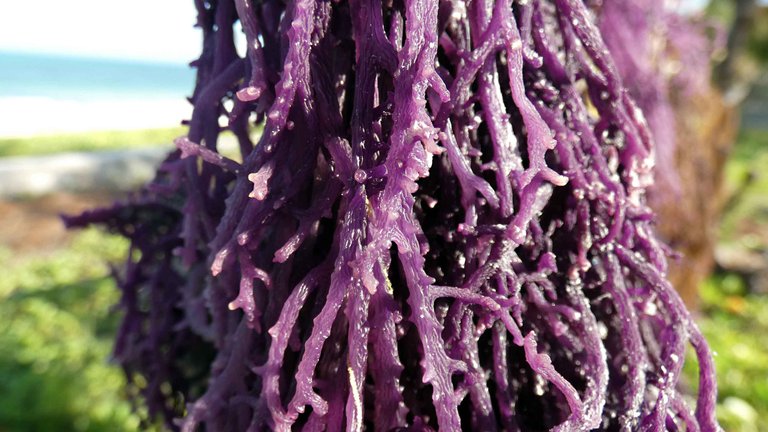

Where does this seaweed in Zanzibar come from?
Skąd te wodorosty na Zanzibarze?

| EN | PL |
|---|---|
| In Zanzibar, algae appeared only in the 1980s, it was supposed to be and still is an additional way of livelihood for the local population. The algae are native to the Philippines, but the local conditions turned out to be ideal for growing them. Sandy warm waters, the water here can be over 32 degrees, fine sand. and above all, the ebb and flow revealing vast stretches of beaches where algae can be grown. | Na Zanzibarze algi pojawiły się dopiero w latach 80-tych, miał być i jest do tej pory dodatkowy sposób na utrzymanie dla lokalnej ludności. Algi pochodzą z Filipin, ale okazało się, że miejscowe warunki są idealne do ich uprawiania. Piaszczyste ciepłe wody, woda może mieć tu ponad 32 stopnie, miałki piasek. a przede wszystkim przypływy i odpływy odsłaniające ogromne połacie plaż, na których można hodować algi. |
How is the algae growing process?
Jak przebiega proces hodowli alg?
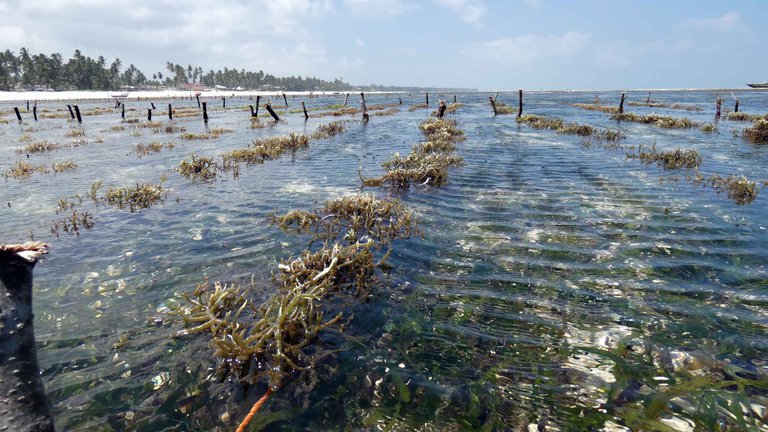
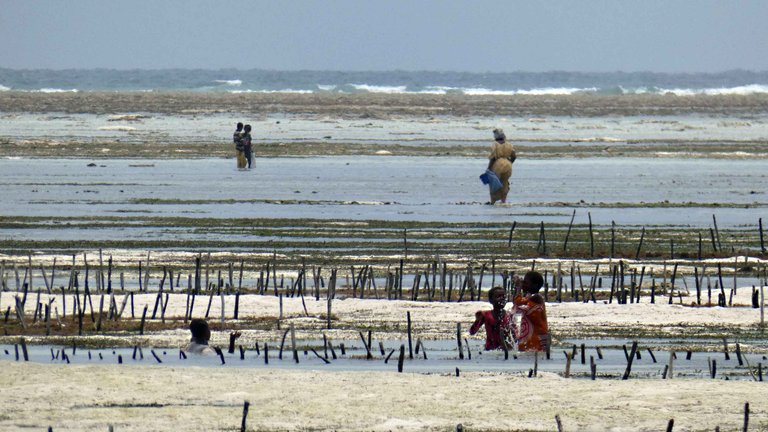
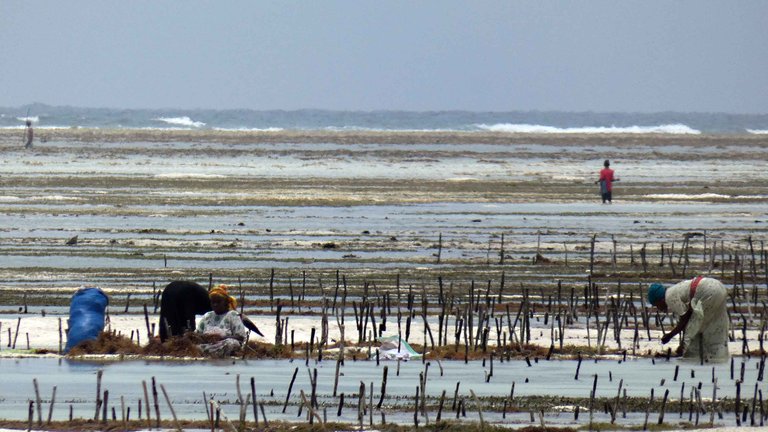
| EN | PL |
|---|---|
| Algae grow in warm seawater. They are hung on strings between the sticks. They are reproduced through fragmentation. Each new seedling is a piece of an already large adult. The entire process takes approximately 2 weeks. The entire process does not need to be attended to daily, and is even impossible due to the ebb and flow. | Algi rosną w ciepłej wodzie morskiej. Przewieszone są na sznurkach między patykami. Rozmnaża się je poprzez fragmentację. Każda nowa sadzonka jest kawałkiem już dużej dorosłej. Cały proces trwa około 2 tygodni. Całego procesu nie trzeba doglądać codziennie, a nawet nie jest to możliwe ze względu na przypływy i odpływy. |
The process of harvesting and drying algae
Proces zbiorów i suszenie alg
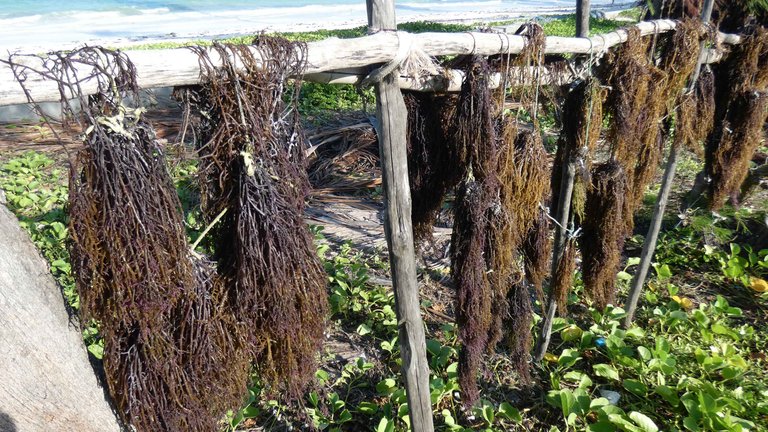
| EN | PL |
|---|---|
| Algae are harvested from the ocean, leaving a new seedling in the place where it has already been harvested. They are tied in bunches and dried in the sun in the form of hanging bundles, or flat, on palm leaves or nets. | Algi zbiera się z oceanu pozostawiając nową sadzonkę w miejscu już zebranej. Wiąże się je w pęczki i suszy na słońcu w postaci wiszących wiązek, lub na płasko, na liściach palm czy siatkach. |
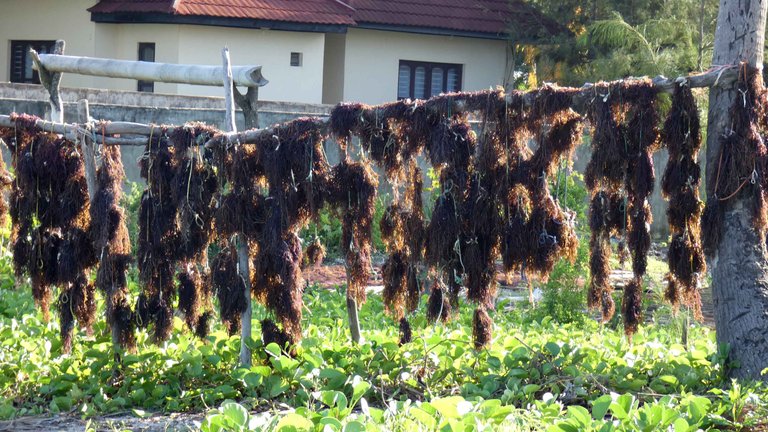

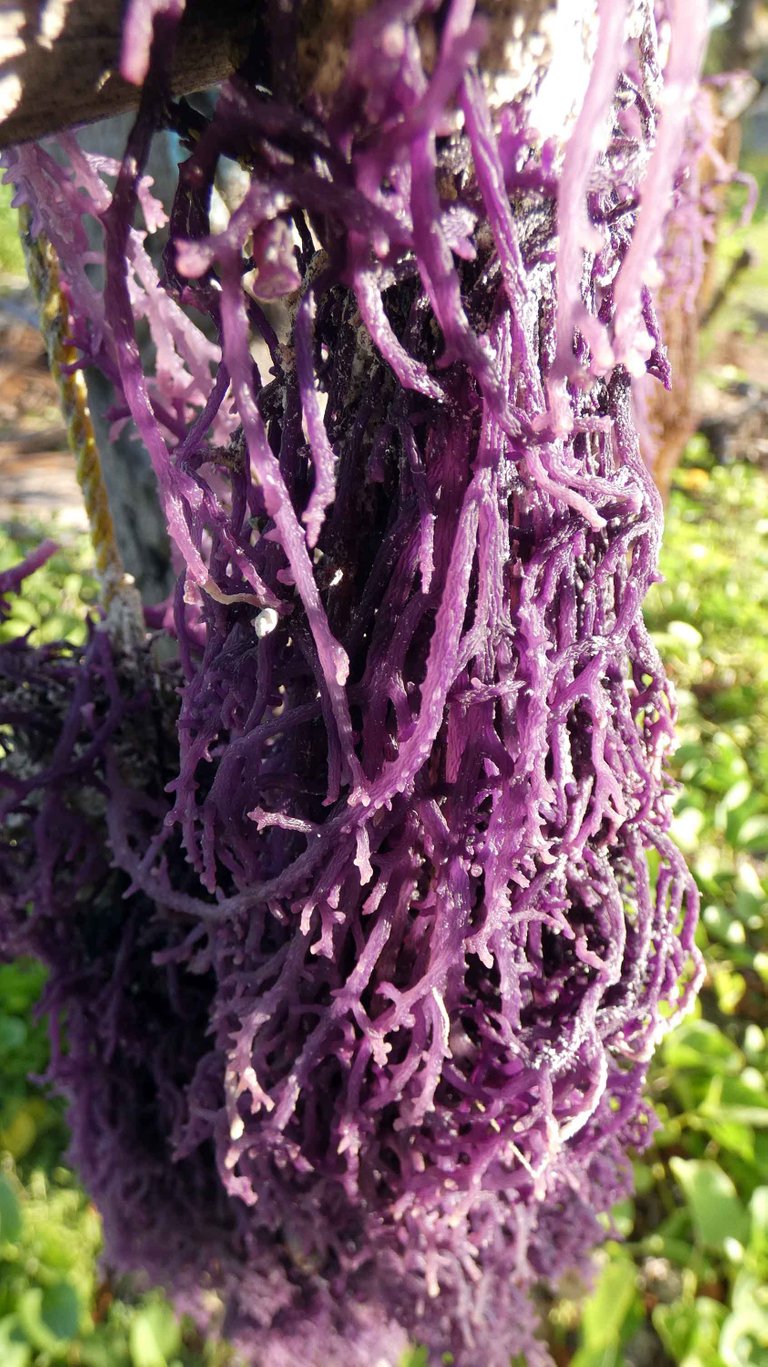

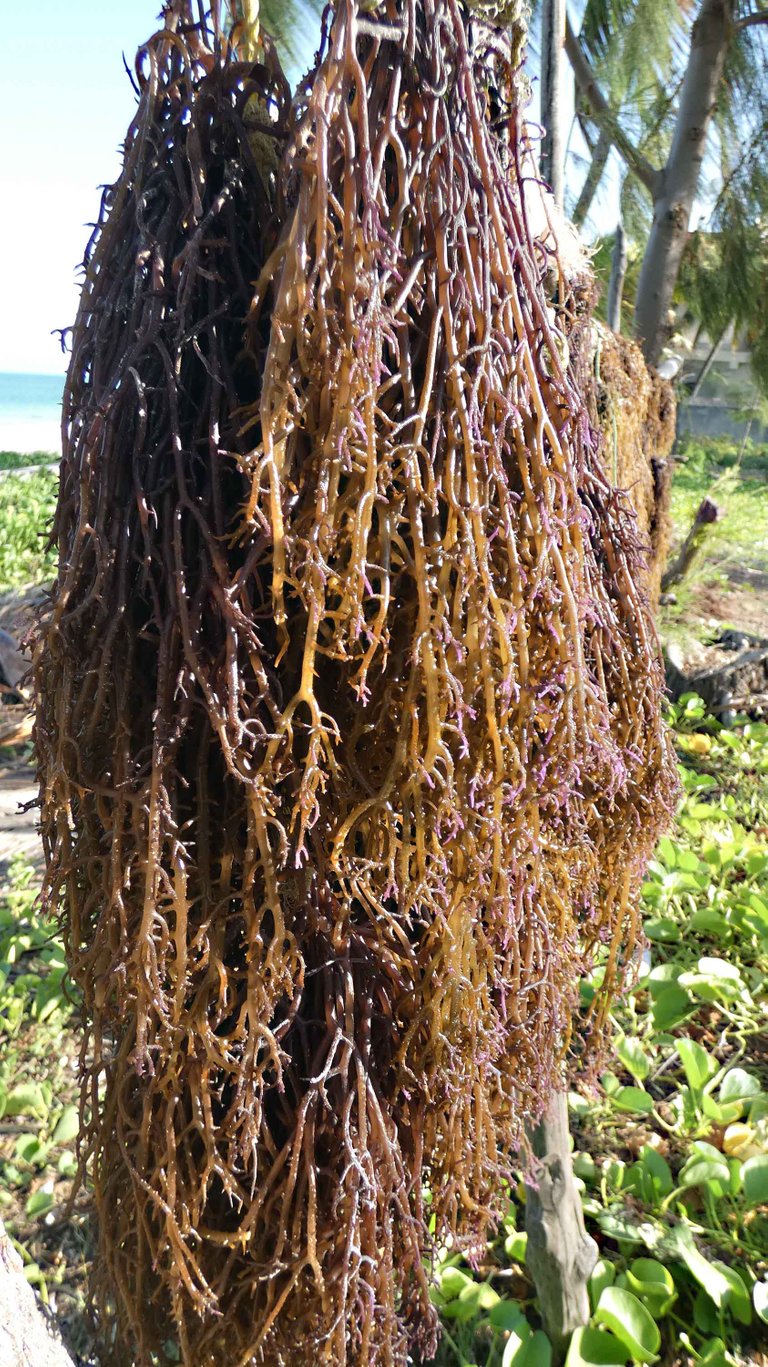
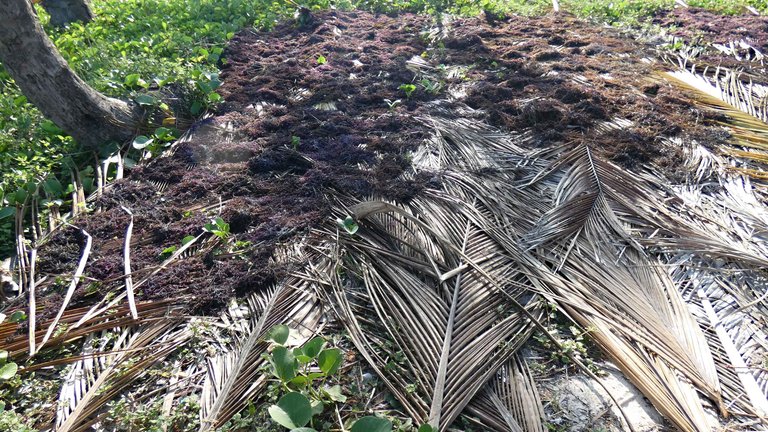
What do they apply?
Jakie mają zastosowanie?
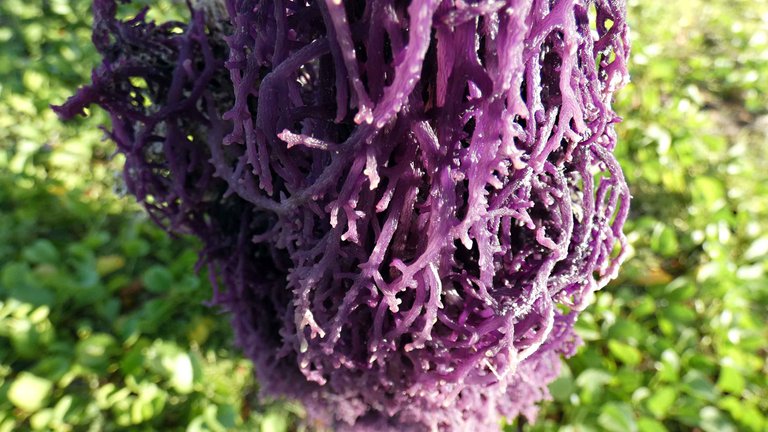
| EN | PL |
|---|---|
| First of all, they are used in the cosmetics industry. In the world, carrageenan is extracted from algae, which makes the algae so elastic, gel-like and crunchy. It is used in the production of gels, jellies and as a thickening agent. Based on powdered algae, various soaps, body scrubs and oils are produced | Przede wszystkim wykorzystywane są w przemyśle kosmetycznym. Na świecie z alg wyodrębnia się karagen, który sprawia że glony są takie sprężyste, żelkowate i chrupię. Wykorzystuje się go do produkcji żeli, galaretek i jako substancję zagęszczającą. Na bazie sproszkowanych alg wytwarza się różne mydła, peelingi do ciała oraz olejki |
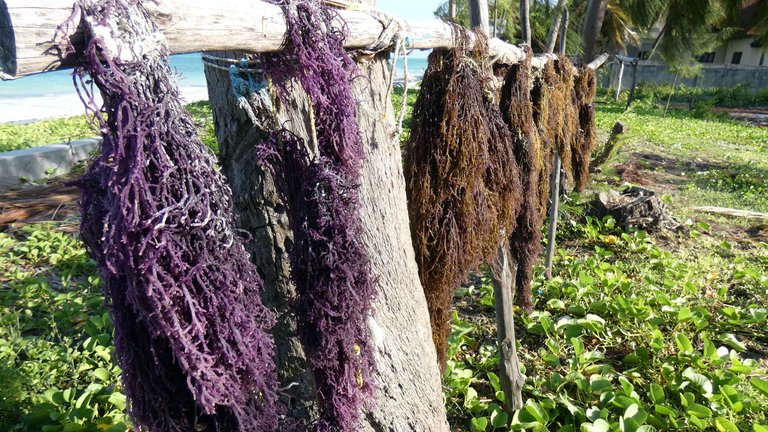
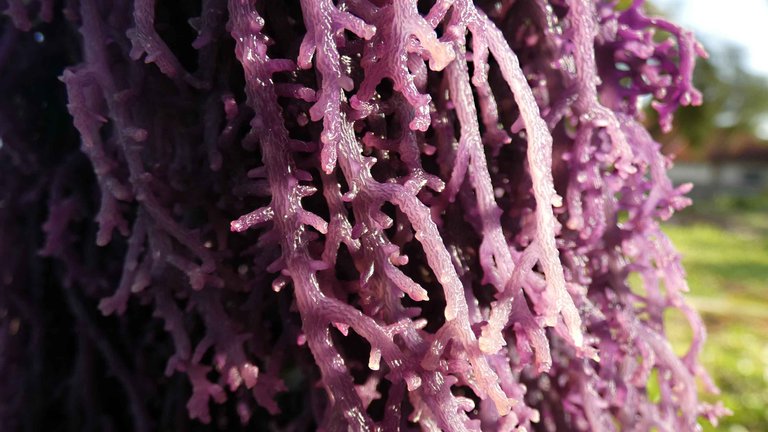
Can you use them culinary? Eat it raw?
Można je wykorzystać kulinarnie? Zjeść na surowo?

| EN | PL |
|---|---|
| Algae are rich in antioxidants and vitamins, but they do not constitute the daily diet of the inhabitants of Zanzibar. They can be eaten raw, directly from the sea, or added to salads, vegetables or other dishes as an addition. | Glony bogate są w przeciwutleniacze i witaminy, jednak nie stanowią codziennej diety mieszkańców Zanzibaru. Można je zjadać na surowo, bezpośrednio z morza, albo dodawać do sałatek, warzyw czy innych potraw jako dodatek . |
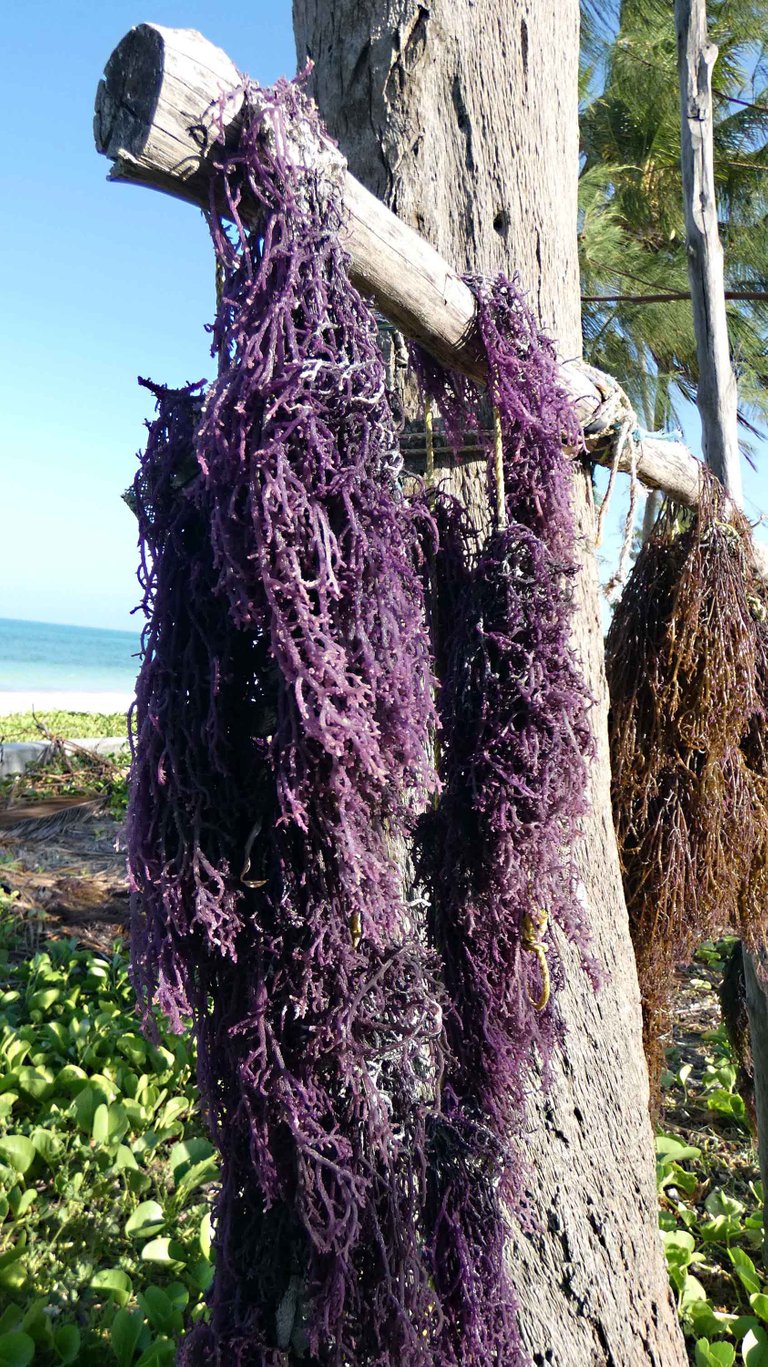
Growing algae saves the local labor market
Uprawa alg ratuje lokalny rynek pracy
| EN | PL |
|---|---|
| Thanks to the cultivation of algae, a large number of Zanzibar inhabitants have jobs. Mainly women, but also men in processing and further distribution. Currently, it is a venture that employs around 30,000 people during the season, and has become a leading branch of the Zanzibar economy, ahead of spice farming and fishing | Dzięki hodowli alg, ogromna liczba mieszkańców Zanzibaru ma pracę. Głownie kobiety, ale w przetwórstwie i dalszej dystrybucji również mężczyźni. Obecnie jest to przedsięwzięcie zatrudniające w sezonie około 30 tysięcy ludzi, i stało się przodującą gałęzią gospodarki Zanzibaru wyprzedzając hodowlę przypraw czy rybołówstwo |
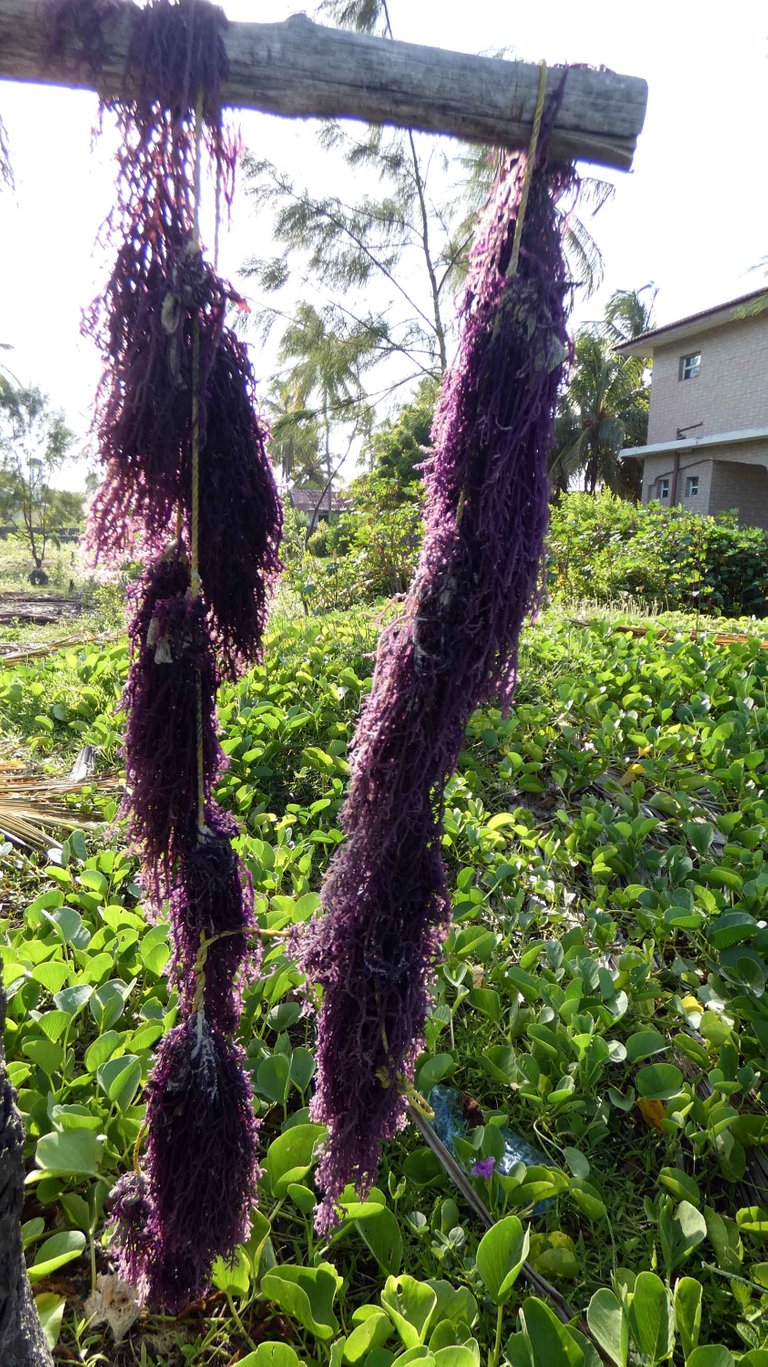
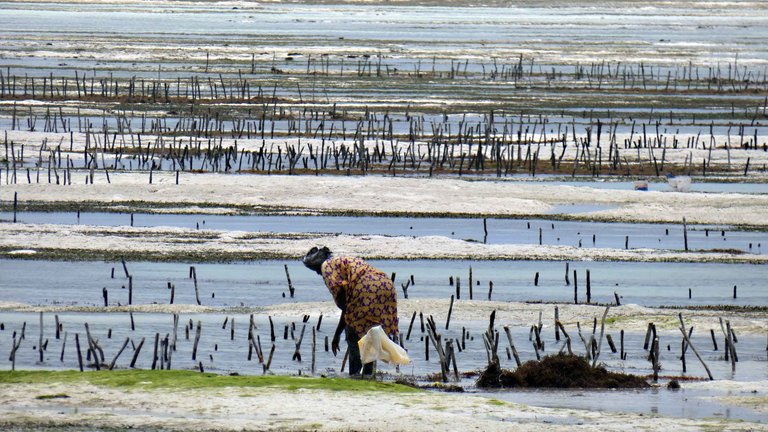
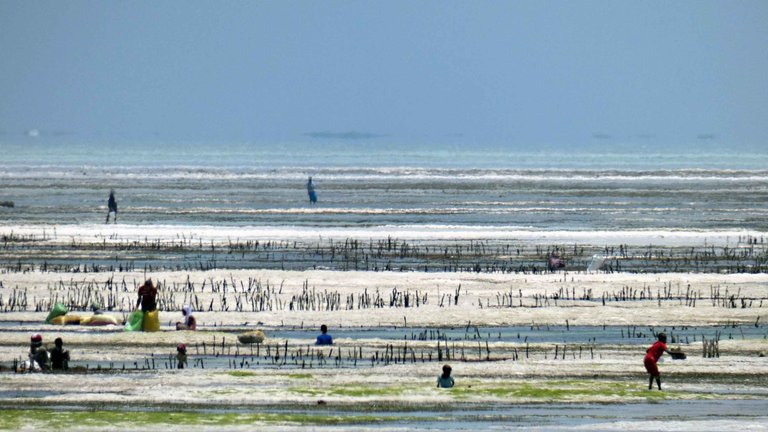

Photo: Panasonic Lumix, Zanzibar, Paje, March 2021
all photos and video were taken by me and are my property
© Copyright marianomariano
Congratulations, your post has been added to Pinmapple! 🎉🥳🍍
Did you know you have your own profile map?
And every post has their own map too!
Want to have your post on the map too?
Remarkable!😍 Comprehensive and excellent information with very informative high quality images too. It was great for me to gain new insights and see the people and the seaweed and their nature there. Thanks for sharing!
Thank You, Greetings from Zanzibar 😉
Thanks for this write-up. It was very interesting to read about the methods used in Zanzibar to grow this algae. I wonder if more areas will adopt this farming practice as waters warm around the globe? We could see more of this in the future.